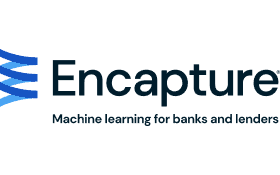
Compliance Success Following the Small Business Lending Rule
Brought to you by Encapture

The Consumer Financial Protection Bureau finalized its 1071 rule at the end of March 2023. Financial institutions can soon expect an unprecedented level of scrutiny around data collection and reporting.
The 1071 ruling is a top regulatory compliance concern expressed by executives, surpassing even Bank Secrecy Act and anti-money laundering rules and obligations associated with the new credit loss standard. It serves two main purposes: it more strictly enforces fair lending laws by providing tracking of small business credits, and it enables creditors to more accurately identify and support women and minority-owned business needs within their communities.
This additional level of regulatory oversight presents unique challenges for banks that will need to implement system and staffing changes in the 18 months following the announcement.
The next steps are deceptively simple but banks must adhered to them in order to create successful systems, procedures and facilitate scalability after the rule goes into effect.
Familiarize and Analyze
First, bankers must determine whether their institution is covered under the 1071 data collection rule. If your bank has originated at least 25 credit transactions to small businesses in the 2 preceding calendar years, you will likely be beholden to these new regulations. If you are unsure whether you qualify, it’s recommended to err on the side of caution.
After your bank determines that it’s subject to the new regulations, it is imperative to become aware of the things you can and cannot ask borrowers in accordance with 1071. Analyzing efforts must include reviewing all small business loan portfolios – things like credit lines, credit cards, merchant cash advances and loans – and creating detailed reports for businesses that will be impacted by the new ruling.
Determine Procedures and Data Collection Standards
A main indicator of success is data integrity. To ensure data integrity, a bank’s policy must include detailed procedures with marked responsibilities and a comprehensive understanding of the institution’s compliance goals by all staff members.
In order to collect strong data, banks may need to implement a robust collection system. Not only must they include loan numbers, types, purposes and pricing in a borrower’s portfolio, they need to include data specifically related to credit, as well as applicable demographic data points. This means training staff in these new procedures, which takes significant amounts of time and money. Institutions predict they may have to double their staff – which on its own does not guarantee the quality of data will be consistent.
One option leaders have are leveraging efficient machine learning systems to stay ahead of the curve and produce quality data while reducing staffing costs.
Automate to Improve Outcomes
Though the 1071 ruling will include starter tools like sample tracking sheets, data integrity will become even more difficult for banks to maintain over time. Manual processes that require human review are prone to error; decreased data integrity will impact any bank’s ability to successfully navigate regulatory reviews and audits.
Deana Stafford is a senior vice president and director of CRA and Fair and Responsible Lending at First National Bank Texas, the community bank unit of Killeen, Texas-based First Community Bancshares. Stafford’s colleagues already use automation to help scrub date related to the Home Mortgage Disclosure Act. Now, with the 1071 regulations, automation is on Stafford’s mind.
“We have already added one full-time staff, citing 1071 and the expansion of CRA data collection and reporting after reading the rules, but there is no way we can double our staff,” says Stafford. “Automation is the best long-term solution.”
Third-party tools that specialize in compliance systems and mitigating risk are the solution. Automation can easily find, consolidate and track the over 30 reported data points under the new rule, and is key to banks efficiently using both staff and resources. Verifying income and extracting data from verified documents can be done by a machine learning system that is embedded into existing digital onboarding infrastructure at a pace much faster and more accurate than a bank employee. Machine learning can shrink labor costs, increase lending capacity and guarantee data integrity; automating monotonous and time-consuming processes is the next logical step toward optimization in the financial industry.
The final 1071 rule is top of mind for financial industry professionals. Leaders must take a close look at their systems and make plans that allow them to stay competitive and compliant. Institutions must invest in intelligence systems to achieve fair lending compliance standards. Addressing current and future compliance issues with automation is the most effective way to avoid skyrocketing time and labor costs.


